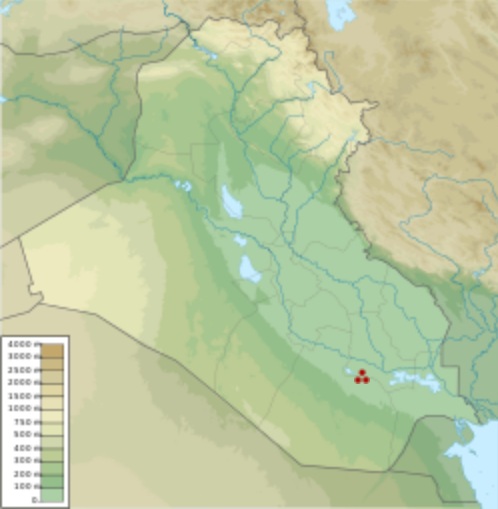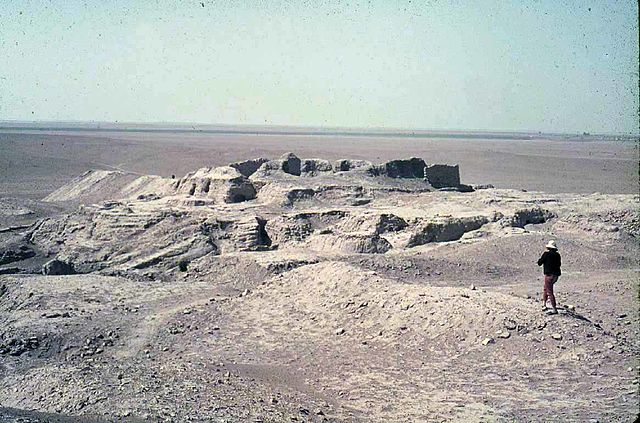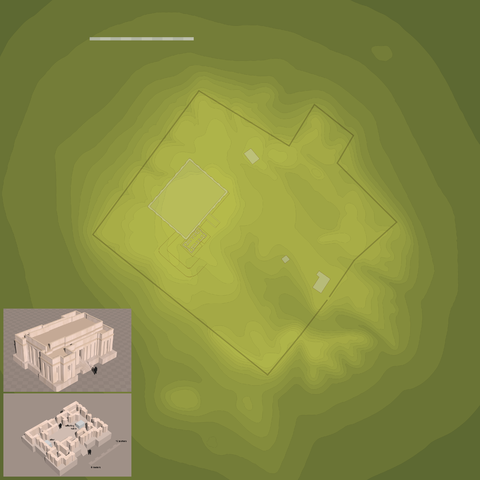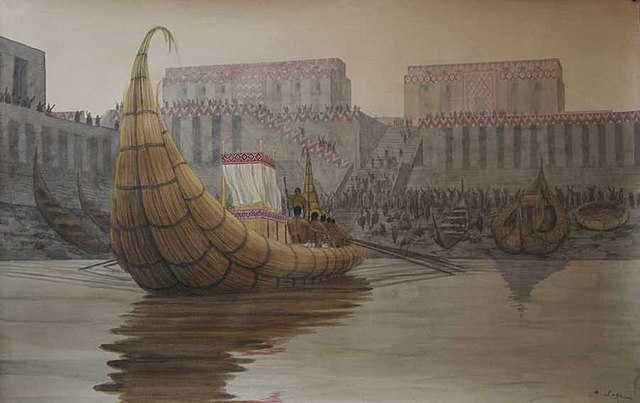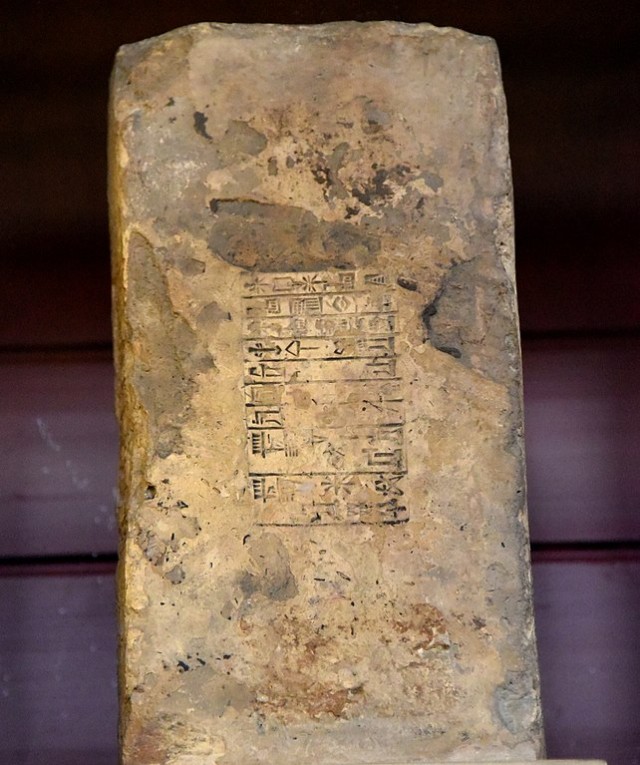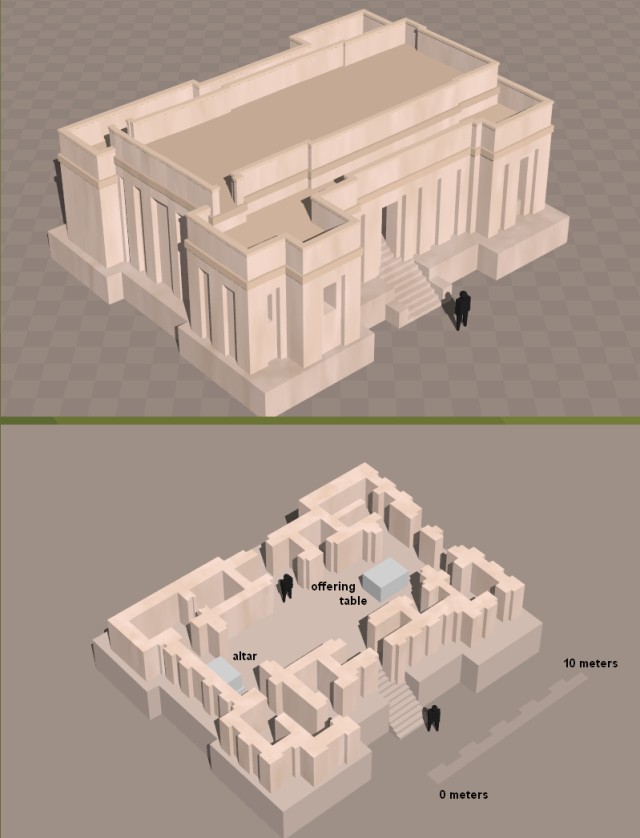
| ERIDU
Eridu
The ruins of Eridu Eridu (Sumerian: NUN.KI/eridugki; Akkadian: irîtu; modern Arabic: Tell Abu Shahrain) is an archaeological site in southern Mesopotamia (modern Dhi Qar Governorate, Iraq). Eridu was long considered the earliest city in southern Mesopotamia. Located 12 km southwest of Ur, Eridu was the southernmost of a conglomeration of Sumerian cities that grew around temples, almost in sight of one another. These buildings were made of mud brick and built on top of one another. With the temples growing upward and the village growing outward, a larger city was built. In Sumerian mythology, Eridu was originally the home of Enki, later known by the Akkadians as Ea, who was considered to have founded the city. His temple was called E-Abzu, as Enki was believed to live in Abzu, an aquifer from which all life was believed to stem.
History of research :
E-abzu temple of Eridu The site at Tel Abu Shahrain, near Basra, has been excavated four times. It was initially excavated by John George Taylor in 1855, R. Campbell Thompson in 1918, and H. R. Hall in 1919. Excavation there resumed from 1946 to 1949 under Fuad Safar and Seton Lloyd of the Iraqi Directorate General of Antiquities and Heritage. These archaeological investigations showed that, according to A. Leo Oppenheim, "eventually the entire south lapsed into stagnation, abandoning the political initiative to the rulers of the northern cities", probably as a result of increasing salinity produced by continuous irrigation, and the city was abandoned in 600 BC.
Myth and legend :
Re-creation of the port at Eridu In the Sumerian King List, Eridu is named as the city of the first kings. The opening line reads, "[nam]-lugal an-ta èd-dè-a-ba [eri]duki nam-lugal-la"
When kingship from heaven was lowered, the kingship was in Eridu
In Sumerian mythology, it was said to be one of the five cities built before the Deluge occurred. Eridu, also transliterated as Eridug, could mean "mighty place" or "guidance place". The king list continues :
In Eridu, Alulim became king; he ruled for 28800 years. Alalngar ruled for 36000 years. 2 kings; they ruled for 64800 years. Then Eridu fell and the kingship was taken to Bad-tibira.
The king list gave particularly long reigns to the kings who ruled before a great flood occurred and shows how the centre of power progressively moved from the south to the north of the country. Adapa, a man of Eridu, is depicted as an early culture hero. He was considered to have brought civilization to the city during the time of King Alulim.
In Sumerian mythology, Eridu was the home of the Abzu temple of the god Enki, the Sumerian counterpart of the Akkadian god Ea, god of deep waters, wisdom and magic. Like all the Sumerian and Babylonian gods, Enki/Ea began as a local god who, according to the later cosmology, came to share the rule of the cosmos with Anu and Enlil. His kingdom was the sweet waters that lay below earth (Sumerian ab=water; zu=far).
The stories of Inanna, goddess of Uruk, describe how she had to go to Eridu in order to receive the gifts of civilization. At first Enki, the god of Eridu, attempted to retrieve these sources of his power but later willingly accepted that Uruk now was the centre of the land. This seems to be a mythical reference to the transfer of power northward.
Babylonian texts talk of the foundation of Eridu by the god Marduk as the first city, "the holy city, the dwelling of their [the other gods] delight".
In the court of Assyria, special physicians trained in the ancient lore of Eridu, far to the south, foretold the course of sickness from signs and portents on the patient's body and offered the appropriate incantations and magical resources as cures.
History :
Fired clay brick stamped with the name of Amar-Sin, Ur III, from Eridu, currently housed in the British Museum Eridu appears to be the earliest settlement in the region, founded c. 5400 BC, close to the Persian Gulf near the mouth of the Euphrates River. Because of accumulation of silt at the shoreline over the millennia, the remains of Eridu are now some distance from the gulf at Abu Shahrain in Iraq. Excavation has shown that the city was founded on a virgin sand-dune site with no previous occupation. Piotr Steinkeller has hypothesised that the earliest divinity at Eridu was a Goddess, who later emerged as the Earth Goddess Ninhursag (Nin = Lady, Hur = Mountain, Sag = Sacred), with the later growth in Enki as a male divinity the result of a hieros gamos, with a male divinity or functionary of the temple.
According to Gwendolyn Leick, Eridu was formed at the confluence of three separate ecosystems, supporting three distinct lifestyles, that came to an agreement about access to fresh water in a desert environment. The oldest agrarian settlement seems to have been based upon intensive subsistence irrigation agriculture derived from the Samarra culture to the north, characterised by the building of canals, and mud-brick buildings. The fisher-hunter cultures of the Arabian littoral were responsible for the extensive middens along the Arabian shoreline, and may have been the original Sumerians. They seem to have dwelt in reed huts. The third culture that contributed to the building of Eridu were the Semitic-speaking nomadic herders of herds of sheep and goats living in tents in semi-desert areas. All three cultures seem implicated in the earliest levels of the city. The urban settlement was centered on a large temple complex built of mudbrick, within a small depression that allowed water to accumulate.
Kate Fielden reports "The earliest village settlement (c. 5000 BC) had grown into a substantial city of mudbrick and reed houses by c. 2900 BC, covering 8–10 ha (20–25 acres)". Mallowan writes that by the Ubaid period, it was as an "unusually large city" of an area of approx. 20–25 acres, with a population of "not less than 4000 souls". Jacobsen describes that "Eridu was for all practical purposes abandoned after the Ubaid period", although it had recovered by Early Dynastic II as there was a Massive Early Dynastic II palace (100 m in each direction) partially excavated there. Ruth Whitehouse called it "a Major Early Dynastic City". By c. 2050 BC the city had declined; there is little evidence of occupation after that date. Eighteen superimposed mudbrick temples at the site underlie the unfinished Ziggurat of Amar-Sin (c. 2047–2039 BC). The finding of extensive deposits of fishbones associated with the earliest levels also shows a continuity of the Abzu cult associated later with Enki and Ea.
Eridu was abandoned for long periods, before it was finally deserted and allowed to fall into ruin in the 6th century BC. The encroachment of neighbouring sand dunes, and the rise of a saline water table, set early limits to its agricultural base so in its later Neo-Babylonian development, Eridu was rebuilt as a purely temple site, in honour of its earliest history.
Architecture :
Large buildings, implying centralized government, started to be made. Eridu Temple, final Ubaid period The urban nucleus of Eridu was Enki's temple, called House of the Aquifer (Cuneiform: E2.ZU.AB; Sumerian: e2-abzu; Akkadian: bitu apsû), which in later history was called House of the Waters (Cuneiform: E2.LAGAB×HAL; Sumerian: e2-engur; Akkadian: bitu engurru). The name refers to Enki's realm. His consort Ninhursag had a nearby temple at Ubaid.
During the Ur III period Ur-Nammu had a ziggurat built over the remains of previous temples.
Aside from Enmerkar of Uruk (as mentioned in the Aratta epics), several later historical Sumerian kings are said in inscriptions found here to have worked on or renewed the e-abzu temple, including Elili of Ur; Ur-Nammu, Shulgi and Amar-Sin of Ur-III, and Nur-Adad of Larsa.
House of the Aquifer (E-Abzu) :
Source :
https://en.wikipedia.org/ |
